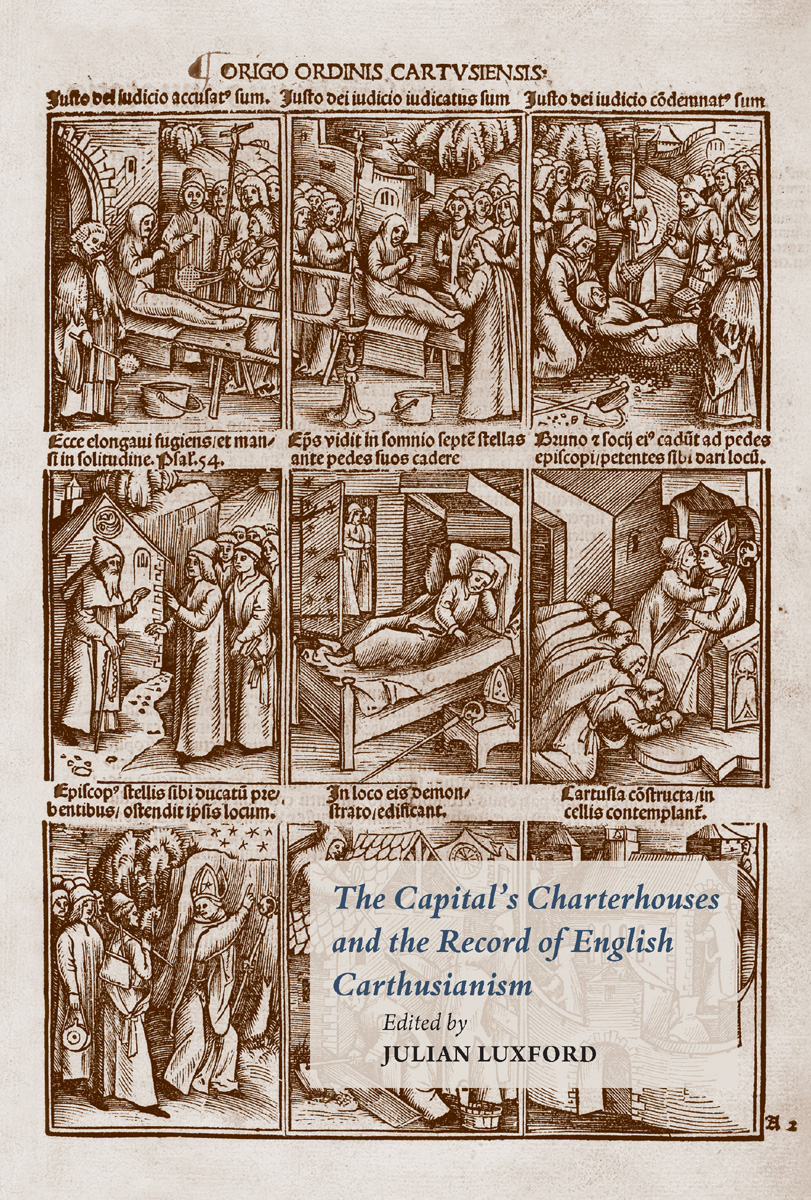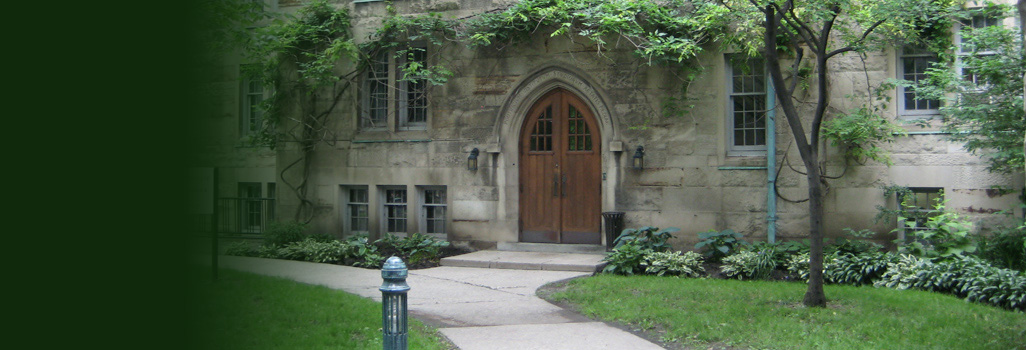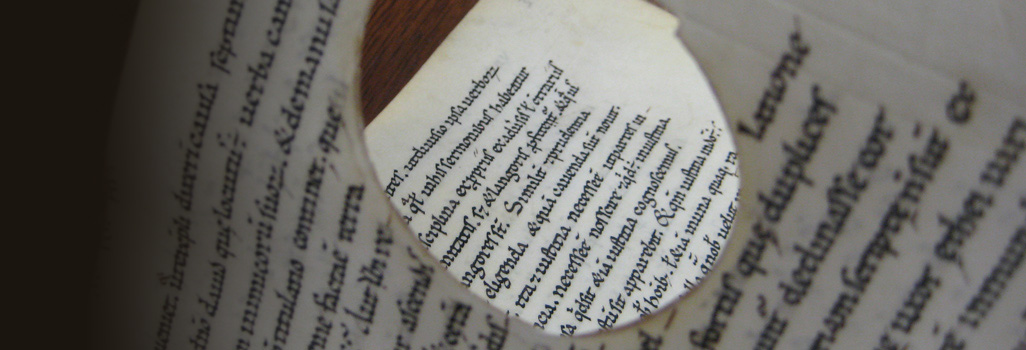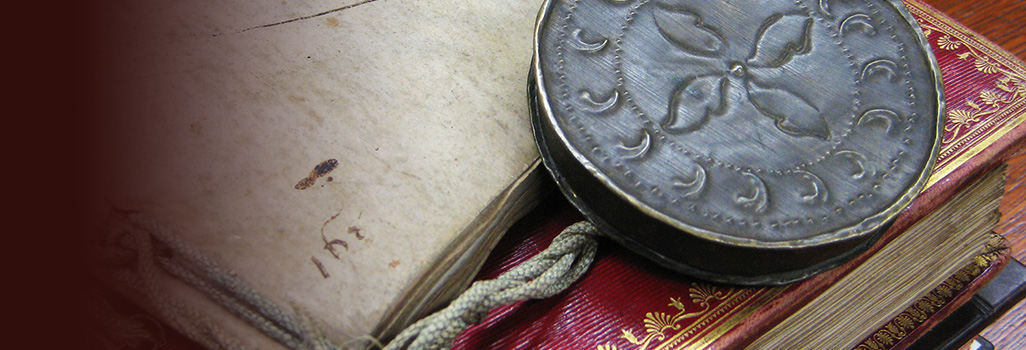
The Capital’s Charterhouses and the Record of English Carthusianism
Papers in Mediaeval Studies 36 • xvi, 300 pp. + 23 colour plates • ISBN 978-0-88844-836-1 • Cloth • $95.00
This volume offers a substantial and versatile contribution to the history and culture of the late-medieval Carthusians in England. The nine essays presented here focus primarily on the double charterhouses built on the outskirts of London, at Smithfield and Sheen. Syon Abbey, the Bridgettine house which stood a short distance from Sheen, and was founded at the same time, is also drawn into the conversation because of its sympathetic and practical links to the Carthusians. Particular attention is paid to the London Charterhouse. This institution is revaluated here as an engineered and ornamented structure, a sanctuary nourished by books and texts, a beacon of religion, a theatre of devotion and political manoeuvres and, in the wake of its dissolution, both a dwelling-place for affluent citizenry and a lieu de mémoire for the English Carthusians in exile.
The “record” of the title is used as a unifying term for these different approaches. It covers the physical evidence studied in essays by Julian Luxford and Glyn Coppack; the devotional iconography presented by Marlene Villalobos Hennessy; the authorship, compilation, and scribal production analysed and debated by Vincent Gillespie and Michael Sargent; the response to the crisis of the 1530s explained by Diarmaid MacCulloch and Ann Hutchison; the impression the monks left on the Smithfield site examined here by James Carley; and the efforts of self-commemoration so influential for the broader reputation of England’s Carthusians studied by Peter Cunich. What the reader will gain from the record is a clearer picture of the historical and cultural circumstances that made the capital’s charterhouses such enigmatic, forbidding, and attractive institutions.
Editor
Julian Luxford is a professor of Art History at the University of St Andrews. His main research interests are medieval art and architecture, the history of medieval books, and the history of the principal monastic orders. He has published a number of essays on Carthusian art, architecture, and books, and edited Studies in Carthusian Monasticism in the Late Middle Ages (2008). He is most recently also editor of The Medieval Book as Object, Idea and Symbol (2021), Tributes to Paul Binski: Medieval Gothic – Art, Architecture and Idea (2021), and of The Founders’ Book: A Medieval History of Tewkesbury Abbey, a facsimile of Oxford, Bodleian Library, MS Top. Glouc. d. 2 (2021).
Contents
Illustrations • ix
Abbreviations • xiii
James P. Carley • Preface • xv
Julian Luxford • Introduction • 1
Part 1: The Material Record
Julian Luxford • The London Charterhouse: Iconography, Buildings, and Art • 11
Glyn Coppack • Water and the Carthusians: The Contribution of the London Charterhouse to Knowledge of the Order’s Plumbing • 55
Part 2: Spiritual Writings and Textual Transmission
Marlene Villalobos Hennessy • British Library, MS Egerton 1821: Devotional Practice and Book Production at the London Charterhouse • 79
Michael G. Sargent • The Transmission by the English Carthusians of Some Late-Medieval Spiritual Writings: A Reconsideration of Walter Hilton and Nicholas Love • 117
Vincent Gillespie • Preaching to the Choir: Another Look at English Carthusian Transmission of Vernacular Spiritual Writings • 152
Part 3: Religious Conscience, Politics, and Afterlife
Ann M. Hutchison • United in Devotion and Martyrdom: The English Carthusians and Bridgettines and Their Fate • 205
Diarmaid MacCulloch • The End of the Carthusians at the London Charterhouse • 225
James P. Carley • After the Dissolution: John Leland and His Neighbours in Charterhouse Square • 240
Peter Cunich • Maurice Chauncy and the Burdens of the English Reformation • 261
Epilogue
Martyn Percy • A Eucharist for Martyrs: “A Fragrant Offering and Sacrifice” – A Sermon Preached at the London Charterhouse on 3 September 2016 • 282
Contributors • 287
Index • 290
Endorsement
“The metropolitan line from Smithfield to Sheen was the Carthusians’ highway to creative, cultural and social influence in late medieval and pre-Reformation England. Not before time, this important collection traces the full history of this remarkable milieu, the buildings and their neighbourhood, the people and the books and ideas that animated them. Julian Luxford brings together scholars who have led in the recovery of its legacy over the past half-century; a coterie of experts in materiality and textuality who are a fitting match for, and tribute to their subject.” — James G. Clark, University of Exeter
Ordering
Customers in North America please order through University of Toronto Press Distribution by phone (1-800-565-9523) or by email (utpbooks@utpress.utoronto.ca). If you would like to order through UTP Distribution using another method such as mail or fax, please click here for a full list of contact and ordering methods. PIMS books are also available on Amazon.ca (for Canadian customers) and Amazon.com (for customers in the U.S.).
Customers outside North America please order through Brepols Publishers. PIMS books are available through the Brepols online catalogue.


